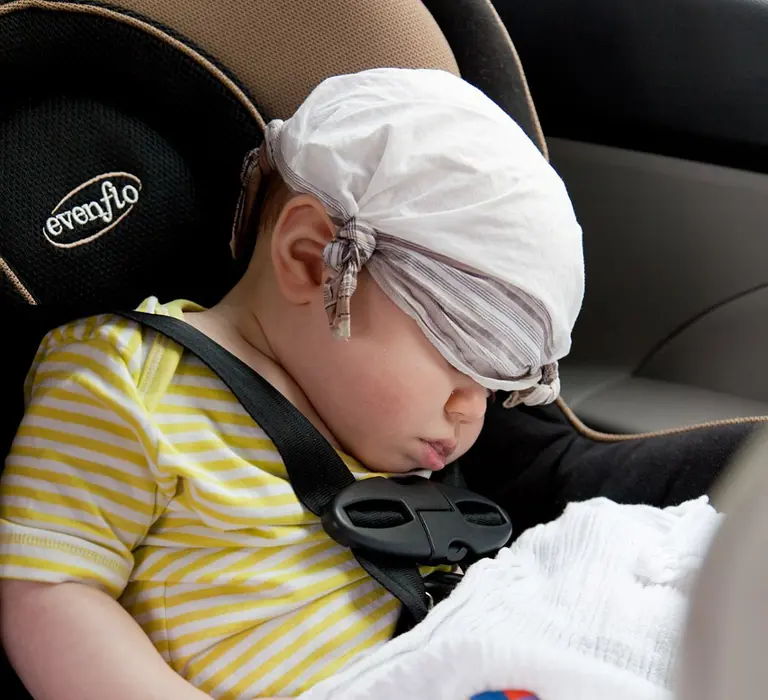Enhancing Child Car Safety in UK - How Parents and Automakers Are Prioritizing Safety for Young Passengers
Ensuring the safety of children in vehicles is a top priority for both parents and carmakers in the UK. With car accidents being a leading cause of injury among children, adopting the right safety measures and staying informed about new technologies can make a significant difference. This article explores the essential steps parents can take to protect their young passengers and highlights the latest innovations in child car safety in UK vehicles.
Legal Requirements and Car Seat Standard
In the UK, the law requires children to use an appropriate child car seat until they are 12 years old or 135 cm tall, whichever comes first. It's crucial to choose the right seat based on the child's weight and height:
Group 0/0+ (Infants up to 13kg): Rear-facing car seats offer optimal protection for babies and should be used from birth to about 15 months.
Group 1 (9-18kg): Forward-facing seats with a harness are suitable for toddlers.
Group 2/3 (15-36kg): Booster seats and cushions ensure that older children are properly secured with a seat belt.
Parents should always follow the manufacturer's instructions for installation and use. Additionally, it's recommended to choose car seats that comply with the latest R129 (i-Size) safety regulations, which provide enhanced protection in side-impact collisions.
Advanced Child Safety Features in New Vehicles
Carmakers in the UK are increasingly incorporating advanced safety features designed to protect young passengers. Some of the latest innovations include:
Integrated Child Seats: Some new vehicles come with built-in child seats that can be adjusted as the child grows. These seats often include sensors to ensure correct harness fitting and provide alerts if adjustments are needed. Rear Seat Reminders: To prevent the tragic incidents of children being left in hot cars, many new models are equipped with rear seat reminder systems. These systems prompt drivers to check the back seat when exiting the vehicle.
Enhanced Airbag Systems: Modern vehicles feature advanced airbag configurations that adjust deployment based on the size and weight of the passenger, reducing the risk of airbag related injuries for children in the front seat.
Correct Installation and Use of Car Seats
Proper installation of car seats is vital for ensuring maximum safety. According to UK statistics, nearly two thirds of car seats are not fitted correctly. Many new vehicles and car seats come with ISOFIX connectors, which provide a more secure and straightforward method of installation compared to seat belts. -
Professional Checks
Parents can visit local car seat fitting clinics or seek advice from certified Child Passenger Safety Technicians (CPSTs) to ensure their car seats are installed correctly.
Keeping Children in the Back Seat
For optimal safety, children under the age of 13 should always ride in the back seat. The rear seats offer better protection in most types of collisions.
Reducing Driver Distractions
Minimising distractions while driving is essential for maintaining focus on the road. Parents could prepare toys, snacks, and other necessities before setting off to avoid distractions during the journey.
Use Technology Wisely:
Many vehicles come with features like hands free calling and in car entertainment systems to keep children occupied safely.
Never Leave Children Unattended in the Car
In the UK, leaving children unattended in a car is not only dangerous but also illegal. Temperatures inside a vehicle can rise quickly, posing severe health risks. Always take children with you, even for short stops.
Educating Children About Car Safety
Teaching children the importance of car safety can reinforce good habits. Explain the reasons for staying buckled up, the dangers of playing with seat belts and doors, and the importance of sitting quietly during the journey.
Child car safety in the UK is a collaborative effort between parents, caregivers, and carmakers. By staying informed about the latest safety regulations, properly using car seats, and taking advantage of advanced vehicle safety features, we can ensure that our youngest passengers are well protected on the road.
